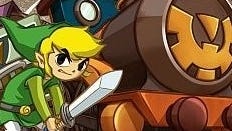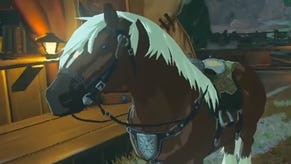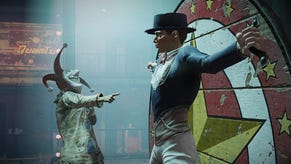Iwata: Zelda dev an "exercise in suffering"
How handheld "parody" changed the series.
Nintendo president Satoru Iwata has said that development of Zelda games is traditionally "an exercise in suffering" - but recognised that one game in the series, made in a completely different style and atmosphere, had a major influence on those that followed.
That game is the 1993 Game Boy classic Link's Awakening, the first handheld Zelda, and the main focus of the latest Iwata asks covering the portable entries in the series.
Nintendo general manager Takashi Tezuka - a producer and director of many Mario and Zelda games, alongside Shigeru Miyamoto - revealed that its development began unofficially, as an after-hours experiment, and even after approval it continued in an informal atmosphere.
"I remember that we made Link's Awakening in a really peculiar frame of mind. We began in the free spirit of an afterschool club, so the contents are quite unrestrained. If you look at it, you can tell," he said, noting that they threw in characters who looked like Mario, Luigi, Yoshi and Kirby without thinking.
"It was for the Game Boy, so we thought, 'Oh, it'll be fine,'" Tezuka said. "We moved along at quite a good speed in a relatively freewheeling manner. Maybe that's why we had so much fun making it. It was like we were making a parody of Zelda."
"I thought it was a tradition for working on a Zelda title for it to turn into a kind of exercise in suffering," Iwata countered.
"I remember it was fun working on it, and when it was over, I remember us talking to each other about how fun it was," Tezuka said.
Neverthless, the offhand creation of Link's Awakening had a long-lasting impact on the Zelda series, the Nintendo veterans admitted.
Current Zelda producer Eiji Aonuma argued that "It wasn’t until Link's Awakening that the Zelda titles started having a proper plot." This came from an unlikely source - Tezuka's fascination with David Lynch's surreal TV series, Twin Peaks.
Tezuka decided that, like Twin Peaks, the game should focus on a singular location, and feature "suspicious" characters. "After that, in Ocarina of Time and Majora's Mask, all kinds of suspicious characters appeared. I didn’t tell them to do it that way, but personally, I did find it considerably appealing," he said.
"I'm certain it was a breakthrough element in the series," Aonuma said. "If we had proceeded from A Link to the Past straight to Ocarina of Time without Link's Awakening in between, Ocarina would have been different."
The bigwigs also discuss the decision to farm handheld Zeldas out to the "sporty" types at Capcom, how the smooth and "fun" development of latest instalment Spirit Tracks resulted in a great game ("You can really feel the enthusiasm of the developers when you're playing" - Tezuka), how Miyamoto's original design document for Zelda in 1985 contains all the core elements of the series, and how Miyamoto and Tezuka drew the map for the first Zelda game together, in ink on graph paper, in a single sitting. Those were the days.











.png?width=291&height=164&fit=crop&quality=80&format=jpg&auto=webp)
